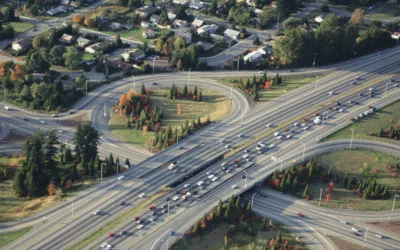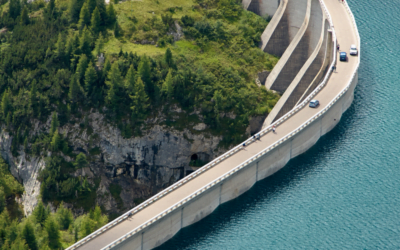Infrastructure design: how technology will change our world
Like all aspects of design, infrastructure design is being changed by the development of new technology. Just as the Industrial Revolution changed the way we live generations ago the technological revolution is set to alter our world once again. The world is changing; so how might things be different in the near future? From the Internet of Things to a growing need for sustainable infrastructure and making use of the cloud, this blog looks at some of the things that will affect infrastructure and how it will change.
A world that is increasingly urbanised
One of the biggest issues for infrastructure planning will be increased urbanisation. By 2050, experts predict that 66% of the world will become urbanised. This will put more pressure on our cities to support their citizens. Growing global populations will need housing, services etc. How will governments be able to provide? Since the financial crises of 2009, doubt has been cast on the ability of debt-ridden governments to support their citizens. Turning to the private sector has been suggested as a solution. The private sector has been approached for assistance in completing large-scale projects that used to be funded by governments. Attracting private investment is reliant on funders being assured that they will receive enough return on their investment to make it worthwhile.
According to Dominic Thasarathar, author of 3 Technology Trends Changing the Future of Infrastructure Investment, technological developments might help this process in the following ways:
- Using Building Information Modeling (BIM) has become a way to reassure investors regarding schedule and cost overruns. Not only is using this technology better for efficiency, but it also makes the project more predictable and removes risk in construction. With reality capture and augmented reality, contractors are starting to be able to predict every aspect of the project in advance and refine the whole process.
- Big data, infinite computing, gaming engines, and reality capture will help investors to choose the right projects so that they will be able to optimise the outcomes.
- Technologies including predictive analytics, reality capture, and Internet of Things, will be able to give accurate assessments of existing infrastructure so that they can be transferred to the private sector, and the capital can be recycled.
Ways that infrastructure design is set to change
There are some big changes coming in the world of infrastructure design, according to Terry D. Bennett, senior industry strategist for civil infrastructure at Autodesk. One of the ways our world will change is the through the interconnectedness of our infrastructure. In a similar way to the Internet of Things, vehicle-to-vehicle communication will enable autonomous driving. And good news for drivers on our increasingly crowded roads, this technology might even relieve traffic congestion.
Technology could also help us to maintain infrastructure, according to Bennett, in the future sensors will predict bridge compromises and leaks. Reality capture is already helping with the upkeep of roads in some places, using drones to take photographic footage and upload the information digitally using Autodesk Recap. Sustainable infrastructure will improve on design from a mere engineering perspective, by including resiliency planning to deal with natural and manmade disasters.
We have already begun to see technology being used replace manual work and, Bennett says, that this trend is set to continue through prefabrication and computer-controlled construction by using CNC technology and 3D printing.
It’s a “brave new world” with many exciting changes afoot for infrastructure design. One thing is certain, Autodesk software products will continue to be at the forefront of innovation.
Baker Baynes is a Gold Partner reseller for Autodesk, contact our Infrastructure and Civil Specialists for a meeting to understand where our Civil Solutions can help you and your organisation.
Photo Credit – www.ecobuildingpulse.com




0 Comments